The #1 Best Daily Ab Workout for Beginners
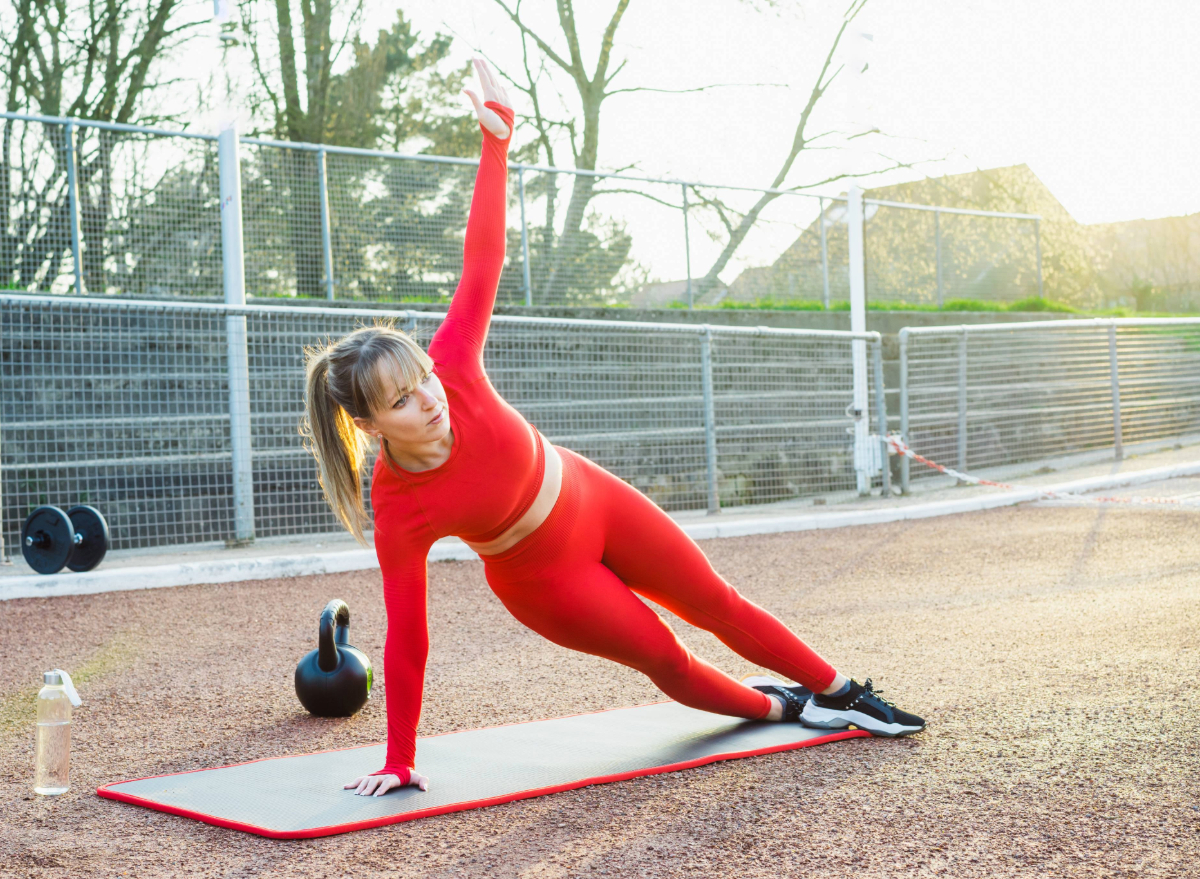
One of the toughest challenges of being a beginner at the gym is deciding which workout types and exercises best align with your goals. Whether you're aiming to build muscle, develop strength, or lose weight, a great ab workout option will truly benefit you. If you're not sure where to start, look no further. I have the #1 best daily ab workout for beginners to seamlessly work into their routines.
This handpicked ab workout was designed to provide a variety of training methods to effectively target your core muscles, accompanied by an approach to target your abs from different angles. By implementing exercises that emphasize strength and stability, this routine goes beyond traditional floor exercises and hits your abs from all directions, focusing on front, side, and bracing exercises. Most of these movements can be performed with your body weight only; just make sure you keep a strong focus on engaging your core muscles. For a little extra intensity, some exercises can be progressed by adding weights to the movement.
Keep reading to check out the go-to daily ab workout for beginners that I always lean on when helping my clients crush their training goals.
Dead Bugs
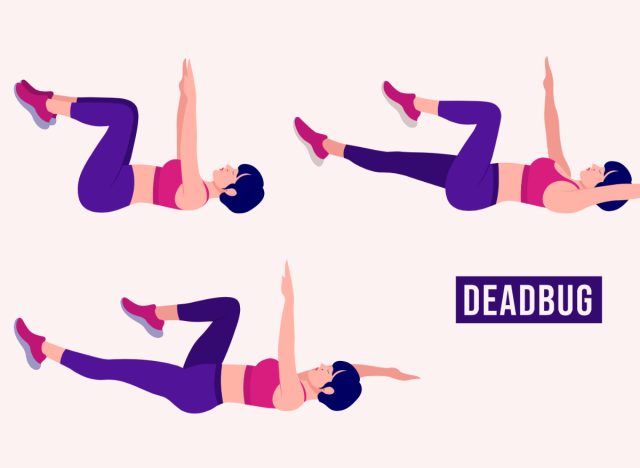
This daily ab workout for beginners starts off with the dead bug. Dead bugs are an excellent ab exercise for beginners as you improve your core stability and strength. This move also targets your lower back as you engage both your upper and lower body through functional movement. Move through each rep with control and intent to fully harness to positive effects of this challenging core exercise.
To perform dead bugs, start by lying on your back with your arms extended (straightened) upward and your legs raised at a 90-degree angle. Engage your core, press your lower back into the floor, and slowly lower one leg and the opposite arm toward the floor. Return to the starting position, and repeat on the other side. Complete three sets of six to eight reps per side.
RELATED: 5 At-Home Strength Workouts for Belly Fat
Reverse Crunches
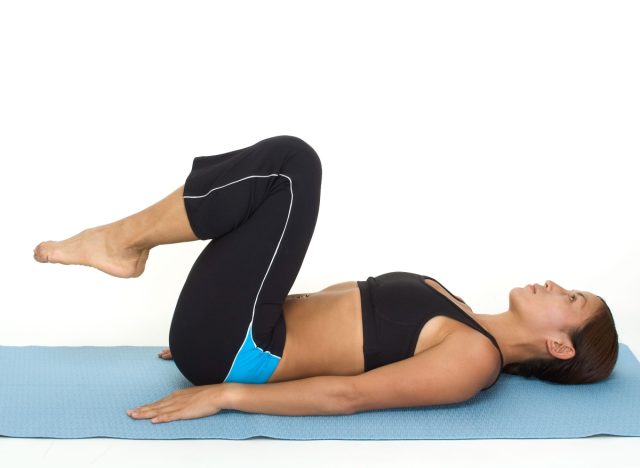
Slow and controlled are the themes for this ab exercise that'll boost a beginner's strength. Adding reverse crunches to your ab workouts allows you to take the benefits of slow eccentric (when your muscles lengthen) movements for bolstering strength—especially in the early days of working out. Trust me—you'll feel the "burn" in your abs if these are done correctly!
Reverse crunches begin with you lying on your back with your arms at your sides and your legs in a tabletop position, placing your hips at a 90-degree angle with your shins parallel to the ceiling. Lift your hips off the floor, squeeze your abs, and slowly lower your heels toward the floor using a three to five-second slow lowering. Once your heels tap the ground, return to the starting position. Perform three sets of five to eight reps. Use a slow lowering of three to five seconds per rep.
Side Planks with Leg Lifts
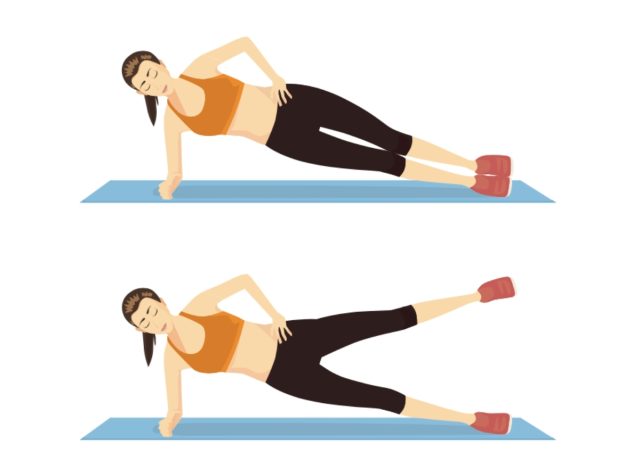
This twist on the traditional side plank will not only have you improving strength and definition in your obliques, but it'll also benefit hip strength and stability. Squeeze your obliques as you stabilize your obliques, and then dynamically move through leg lifts targeting the glutes and lower back muscles.
To perform side planks with leg lifts, position yourself in a side plank position with your elbow directly beneath your shoulder and your body forming a straight line. Lift your hips, engaging your core to maintain a straight side plank. Once stabilized, lift your top leg upward, focusing on using your outer hip muscles, two to three inches. Lower the lifted leg back down with control. Perform the leg lifts for the desired number of repetitions while holding the side plank position. Complete three sets of 10 to 15 reps per side.
Bicycle Crunches
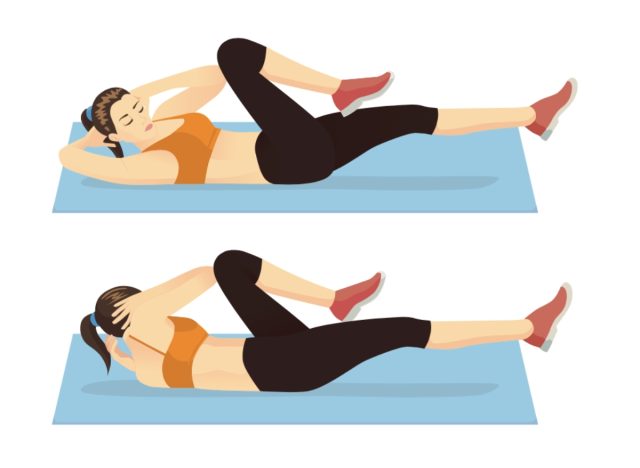
Bicycle crunches are excellent for targeting the transverse abdominals, which run diagonally across your midsection. However, precision is key, as improper form can diminish their effectiveness. Ensure each repetition is deliberate and controlled, engaging your abs with intent as you move from side to side. This mindful approach maximizes the impact of bicycle crunches for a more effective abdominal workout.
Start by lying on your back with your hands behind your head and your legs lifted off the ground. Alternately bring your right elbow toward your left knee while extending your right leg straight, twisting your torso. Simultaneously switch, bringing your left elbow toward your right knee while extending your left leg. Continue this pedaling motion, engaging your core throughout. Perform two to three sets of eight to 15 reps per side, or use intervals of 30 to 60 seconds.
Bear Holds with Shoulder Taps
Bear holds serve as a valuable transition into dynamic crawling variations as your abdominal workouts advance in complexity. Introducing shoulder taps enhances the exercise by incorporating shoulder strength and stability along with anti-rotational movements. This combination engages your core and hips in harmony, adding both challenge and functionality to your workout routine.
The bear hold with shoulder taps begins in a tabletop position with your wrists beneath your shoulders and knees beneath your hips. Lift your knees a few inches off the ground, creating a "bear" position. While maintaining a stable core, tap your right hand to your left shoulder, then the left hand to the right shoulder, alternating sides. Focus on preventing excessive hip movement and keeping a strong, engaged core throughout the exercise. Complete three sets of 10 to 15 reps each.
Loaded Carries
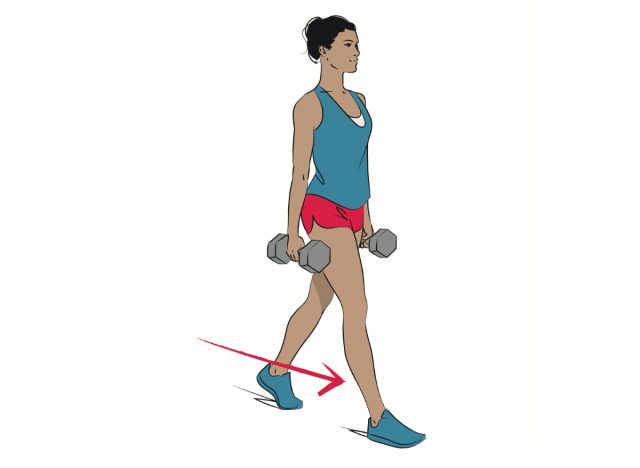
This ab workout for beginners wraps up with the loaded carry. Performing loaded carries involves walking while holding heavy weights, such as dumbbells or kettlebells, in each hand. This is one of the more effective and functional ab exercises you can perform. You target your abs, upper back, and lower back, and you improve your grip strength, making loaded carries an excellent full-body core movement.
Start in an upright posture, and squeeze your core. Next, start walking as you keep your shoulders down and back, and avoid leaning excessively. Walk for a predetermined distance or time, ensuring a smooth and controlled pace. Use either two-arm holds or single-arm holds to create variation and changing challenges for your loaded carries. Perform three sets of 20 to 30-yard carries, or use intervals of 30 to 60 seconds.









